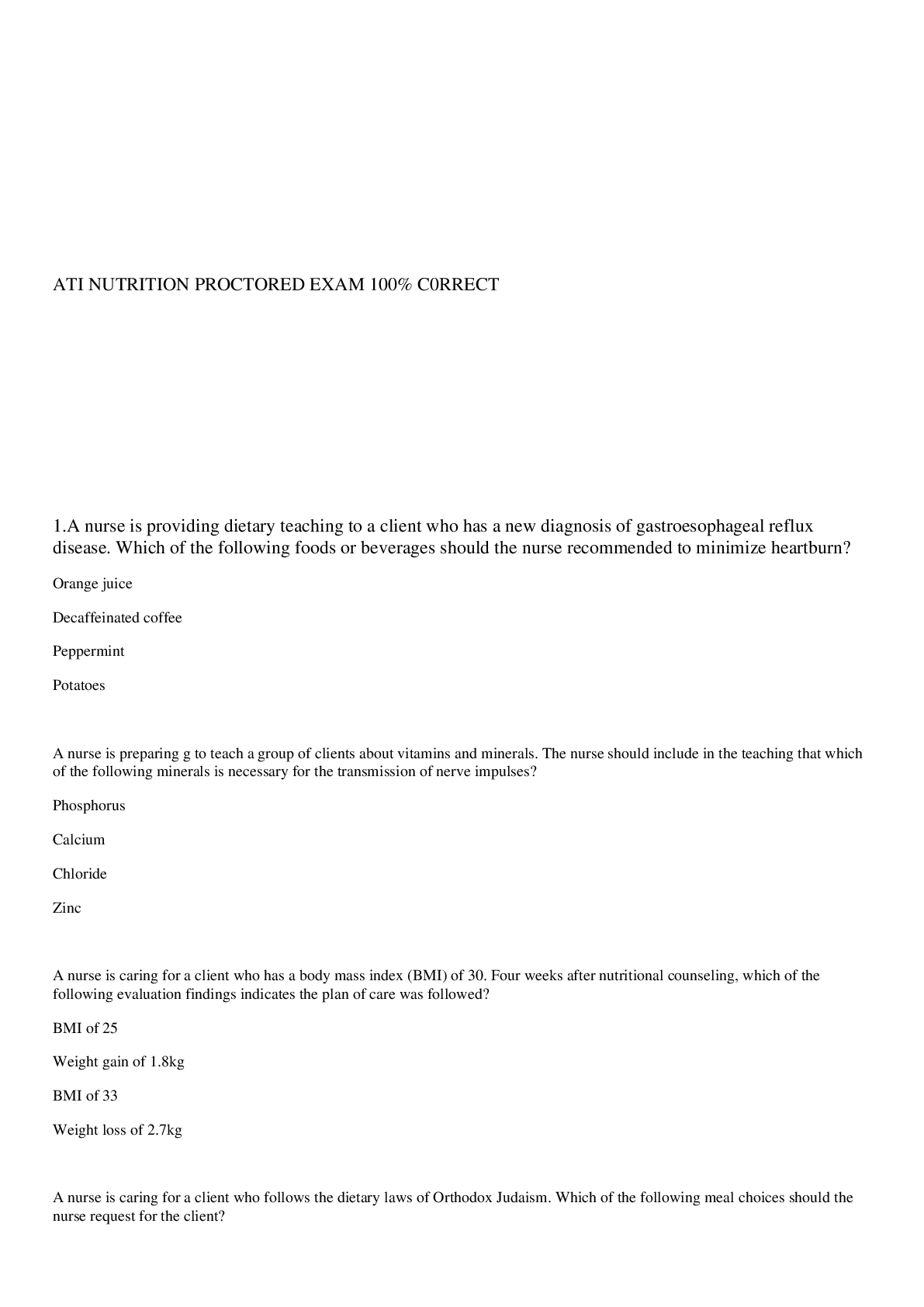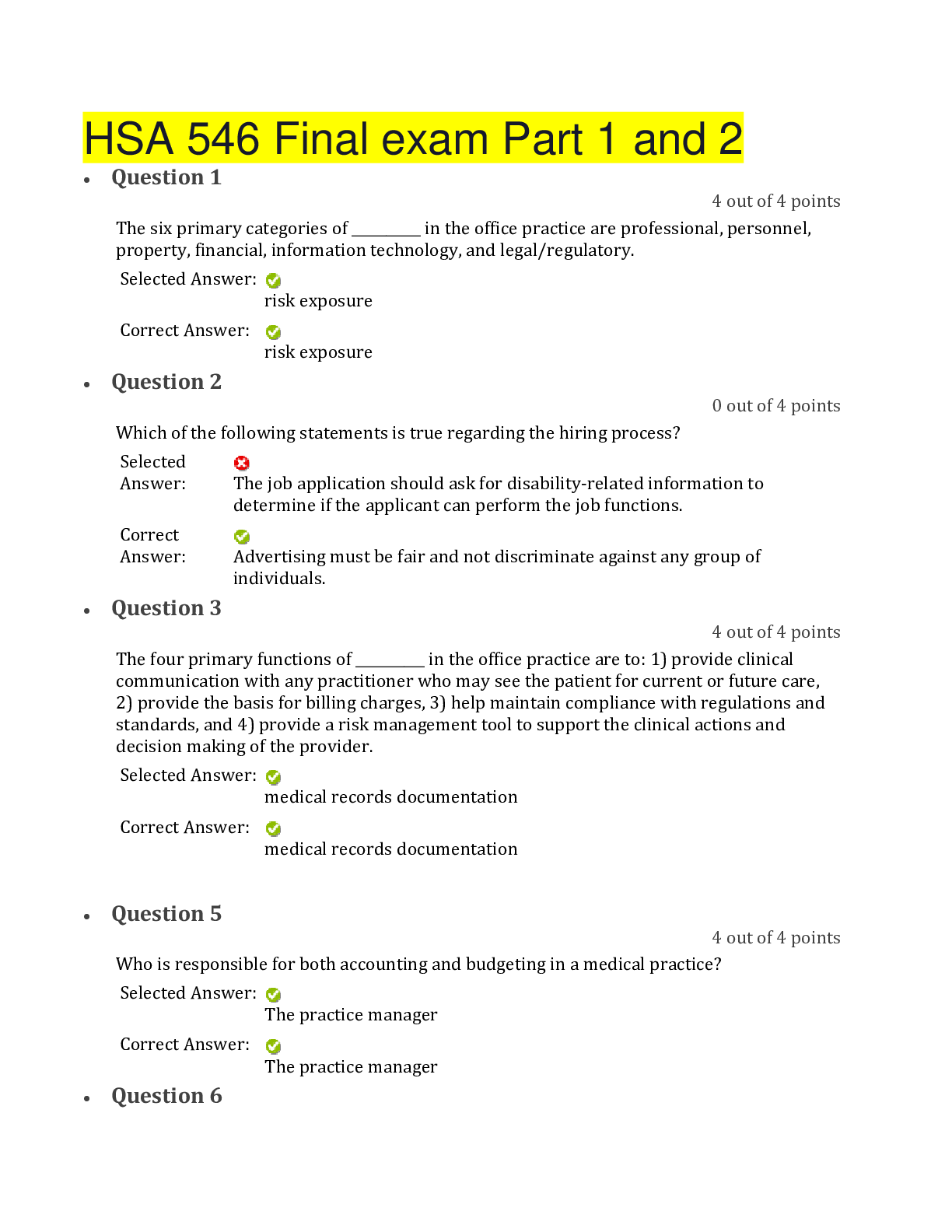Health Care > EXAM > First Aid USMLE Step 3 Questions And Answers With Complete Solutions (All)
First Aid USMLE Step 3 Questions And Answers With Complete Solutions
Document Content and Description Below
First Aid USMLE Step 3 Questions And Answers With Complete Solutions A 42 year old woman presents with HA, nausea, vomiting, and a red eye that has progressively worsened since this morning. She al... so notes vision changes. Exam reveals conjunctival injection: a mid-range fixed, dilated pupil: and no focal weakness in the extremities. What should you do next? Correct Answer: Use tonometry to check IOP. A pressure of over 30 mmHg confirms the diagnosis of acute closed angle glaucome. Emergent referral to ophthamology and possible hospitalization to reduce IOP. Treatment includes topical BB (timolol), IV acetazolamide, and topical steroids. A 71 year old man with a history of well controlled asthma presents in November for his annual checkup. He has no complaints, and his PE findings are unremarkable. He received the pneumococcal vaccine 3 years ago. What should be given before the completion of his visit? Correct Answer: Annual influenza vaccination is recommended for all patients over 6 months of age who lack contraindications (severe allergy/ anaphylaxis to egg protein). The live attenuated vaccine should not be used in populations who are pregnant, immunosuppressed, or have taken influenza antiviral medication within 48 hours. A 68 year old woman is brought to your office because her son is concerned that she is losing her memory. He describes several instances in which she forgot what he has just told her, adding that she was recently unaware that he was calling to her at a crowded park. She spends most of her time at home watching television. What is the diagnosis? Correct Answer: Presbycusis, or age related hearing loss. Hearing loss in elderly persons must be evaluated. Patients may have difficulty distinguishing voices in a crowd, which is often misinterpreted as memory loss. Patients may become socially isolated. A 24 year old medical student develops a rash when he puts on a pair of latex examination gloves. What is the mechanism leading to this rash? Correct Answer: Allergic contact dermatitis is a result of delayed contact (type IV) hypersensitivity caused by allergen-primed memory T lymphocytes (vs irritant contact dermatitis, which results from cytokines released following irritant contact). A 26 year old man presents with targetoid papules that appeared on his palms 2 days ago. He states that he was recently prescribed a new antiseizure medication for his epilepsy. He denies any other symptoms, and exam reveals no other lesions. What is the diagnosis? Correct Answer: Erythema multiforme secondary to the new antiseizure medication. EM differs from Steven-Johnson syndrome/ toxic epidermal necrolysis in that lesions are genrally localized to the extremities (vs spreading from the face and trunk), and the disease course is usually less severe. A 71 year old man complains of a lesion on his right flank that was preceeded by tingling in the same area 1 day ago. Exam reveals a 4 inch band of painful vesicles with secondary crusting and a clear midline border. What test do you send to confirm your clinical diagnosis? Correct Answer: Although a clinical exam is typically sufficient for the diagnosis of herpes zoster, a PCR of fluid from the lesion can be confirmatory. NSAIDs may be useful for pain control, and antiviral therapy may speed resolution and decrease the likelihood of postherpetic neuralgia. A patient presents for evaluation of a pigmented skin lesions. Biopsy reveals melanocytes with marked atypia characteristic of melanoma. What feature is the most important prognostic factor? Correct Answer: Depth of invasion of the melanoma A 74 year old man presents with inability to maintain an erection. Although the problem started several years ago, he states that he ignored it because he thought it was a normal part of aging. How should the patient be counseled? Correct Answer: Although erectile dysfunction is associated with age, it is still considered abnormal, and patients with erection difficulties should be adequately evaluated for all potential causes. A 70 year old man is prescribed terazosin for his benign prostatic hyperplasia. How does the drug treat his condition, and what other medical condition does its mechanism of action address? Correct Answer: Alpha blockers such as terazosin act on smooth muscle in the prostate, bladder neck, and urethra. They also act on vascular smooth muscle, causing vasodilation; therefore, they can work to lower HTN as well. A 41 year old woman with woman with no significant medical history comes to your clinic for her first checkup. Her mother has type 2 DM. Her PE findings, including BMI, are normal. Which screening tests might you recommend? Correct Answer: A Pap smear and HTN screening. A diabetes workup (fasting glucose test, HbA1c) is not needed as the patient is under 45 years of age with a normal BMI. Given the patient's age, a screening mammogram is controversial. It is important to discuss the risks, benefits, and alternatives of screening before proceeding. A 58 year old woman with long standing HTN is admitted to the hospital with dyspnea on exertion and bibasilar crackles, and you suspect heart failure. Which imaging modality would confirm your diagnosis? Correct Answer: Transthoracis echocardiography (TTE). TTE provides specific information, such as left ventricular ejection factor (LVEF) and diastolic compliance and relaxation, which can confirm the diagnosis of systolic and diastolic heart failure. It also yields information about specific etiologies or precipitants such as valvular or wall motion abnormalities. A 54 year old business executive develops chest pain while at work. His vital signs remain stable. The chest pain is partially relieved by nitroglycerin but worsens with cough and deep inspiration. He is brought to the ED, where his ECG reveals diffuse ST-T elevations. His cardiac biomarkers are normal. What is the appropriate treatment? Correct Answer: NSAIDs. The patient most likely has pericarditis, which is a clinical diagnosis. A 64 year old woman suddenly develops hypotension and SOB 1 day after CABG surgery. Exam reveals JVD and muffled heart sounds, and bedside pulsus paradoxus is present. Besides ordering an urgent echocardiogram, what are your next therapeutic steps? Correct Answer: Administer IV fluids pursue emergent therapeutic pericardiocentesis or pericardial window. A 65 year old Caucasian man who has a history of diabetes and is currently on meformin has BP readings of 150/90 and 140/95 on multiple office visits. You start him on an ACEI, but he returns for follow-up complaining of a dry cough with a measured BP of 145/92. What is your BP goal for this patient, and what are additional options for treating his hypertension? Correct Answer: Thiazide diuretics, CCBs, ACEIs, and ARBs are all therapeutic options. The BP goal for this patient would be under 130/80. In light of his cough (a potential adverse effect of ACEIs), you could switch the patient to an ARB and add a second medication to achieve goal BP. A 69 year old hospital administrator presents to the ED with severe, tearing chest pain that radiates to his back. CXR is unrevealing. Given your concern for potential aortic dissection, what is the next diagnostic step? Correct Answer: Chest CT with IV contrast. TEE is appropriate for patients with a history of allergic reaction to IV contrast. A 73 year old man with a history of diabetes mellitus, but with no history of clinical CAD, comes to your office for the result of his recent bloodwork. His fasting lipid panel is significant for an LDL of 130 mg/dL, and his 10 year risk of atherosclerotic cardiovascular disease is 7%. In addition to educating him on diet and lifestyle changes, what action should you take? Correct Answer: Start moderate intensity statin therapy with a goal LDL reduction of 30-50%. A 26 year old IV drug user is admitted to the hospital with fevers and chills. Despite broad antibiotic therapy, blood cultures remain persistently (+), but TTE is normal. Given your suspicion of infective endocarditis, what is your next step? Correct Answer: Order a TEE, which is more sensitive than TTE for visualizing vegetations and diagnosing endocarditis. When endocarditis is suspected clinically but TTE is normal, a TEE is indicated to better confirm or rule our infection. A 73 year old woman who has had palpitations for 4 days presents with AF with rapid ventricular response. Other than mild shortness of breath, she is hemodynamically stable. What is the best management approach? Correct Answer: Rate control. Paroxysmal AF may also lead to atrial clot formation. Cardioversion should be attempted only is a mural thrombus has been ruled out. A 25 year old man becomes involved in a bar fight and sustains a "fight bite" (closed fist injury) to his hand. The wound culture grows gram (-) rods. What is the most likely pathogen, and how should it be treated? Correct Answer: Eikenella corrodens, the most likely pathogen, is common in human bit infections that are sustained in closed-fist injuries. Treat with amoxicillin/ clavulanate. A 37 year old known IV drug user is brought to the ED with trismus and facial grimacing 30 minutes after using heroin. What is the most likely diagnosis? Correct Answer: Strychnine poisoning, which can look just like tetanus. When heroin is "cut" drug dealers use white, bitter chemicals so that the drug still tastes pure. Strychnine antagonized glycine (an inhibitory neurotransmitter) in the spinal cord. Give benzodiazepines. A 20 year old woman is pulled unconscious from a cold lake 5 minutes after her sailboat capsized. Despite the problems associated with hypothermia, her near drowning is likely to have a outcome than other causes of hypoxia. Why is this the case? Correct Answer: Activation of the diving reflex (reflex bradycardia and breath holding), which reduces metabolic demands and the effects of hypoxemia, shunts blood to the vital organs and limits aspiration of water. A 35 year old migrant worker with no past medical history has a syncopal episode while harvesting tobacco. Exam reveals diminished mentation, tachypnea, and rales. His bloodwork reveals hypovolemic hyponatremia, hypoglycemia, leukocytosis, and increased LFTs. What diagnosis can account for all these abnormalities? Correct Answer: Exertional heat stroke. A 20 year old, 154 lbs (70 kg) college student was attempting to light a campfire when his shirt caught on fire. Because of the remote location, it took EMS 2 hours to bring the patient to the ED. On exam, you estimate a 30% body surface full thickness burn. What is the initial fluid administration rate? Correct Answer: The rate should be 0.5 x 70 kg x 4 cc/kg x 30% / 6 hours = 700 cc/hour. The Parkland formula requires that half the volume be given in the first 8 hours (0.5), is weight based (70 kg x 4 cc/kg), and depends on the surface area burned (30%). Why divide 6 hours and not 8? Because we're already 2 hours in from the initial burn. A 45 year old obese man presents with polyuria and weight loss. What level of serum glucose is diagnostic of DM? Correct Answer: A serum glucose level of 200 mg/dL or greater is diagnostic of DM in a symptomatic patient. A 20 year old woman with type 1 DM presents with abdominal pain. Labs reveal a glucose level of 270 mg/dL, HCO3 14, and an anion gap of 20. She is stated on IV fluids and insulin. Repeat labs show glucose of 190 mg/dL, HCO3 16, anion gap 17. What is the next step in management? Correct Answer: Continue the insulin drip and add glucose. Insulin drip should be continues until the anion gap closes, not until the glucose normalizes. An 8 year old boy presents with a 2 day history of a productive cough and a fever of 38.4 C (101.1 F). Labs reveal leukocytosis, a blood glucose level of 341 mg/dL, a serum bicarbonate level of 13 mEq/L, and a UA positive for 2+ ketones. CXR reveals lobar pneumonia. Which serum ketone is likely elevated? Correct Answer: Beta hydroxybutyrate. A 30 year old woman presenting with weight loss and heat intolerance is found to be tachycardic. Labs reveal a suppressed TSH and an increased T4 level. What is the most common cause of these findings? Correct Answer: Graves disease. A 55 year old man complains of hoarseness and difficulty swallowing. As a teenager, he received external radiation to treat his severe acne. Exam reveals a palpable thyroid nodule. His TSH level is 1.5 mIU/L. What is the next step in diagnosis? Correct Answer: The patient's clinical presentation, history or irradiation, and normal TSH level raise suspicion for malignancy. Order an ultrasound of the thyroid to isolate the nodule or nodules to be screened for thyroid cancer by fine needle aspiration (FNA). A 68 year old woman presents to her primary care physician for a routine checkup. The physician orders DEXA scan of the spine and hip. What T-score value denotes osteoporosis? Correct Answer: T-score < -2.5. A 30 year old woman with a history of systemic lupus erythematosus (SLE) presents with increased truncal obesity, a fatty hump between her shoulders. She is on long-term steroids. What is the next best step in management? Correct Answer: Exogenous steroids can cause iatrogenic Cushing syndrome. If possible, discontinue or taper steroids prior to evaluation for endogenous Cushing syndrome. A 65 year old man with a known recent diagnosis of melanoma presents with vague complaints of dizziness, weakness, fatigue, and weight loss. Basic lab testing reveals hyponatremia. What testing will determine the diagnosis? Correct Answer: AM serum cortisol and AM serum ACTH. A 60 year old man with a history of erectile dysfunction presents with headaches and associated temporal field visual loss. Lab testing reveals increased prolactin levels. What is the imaging test of choice? Correct Answer: MRI to assess the pituitary for possible prolactinoma. A 40 year old woman with a history of difficult to control HTN presents with a headache. A review of systems reveals associated palpitations and diaphoresis. On exam, she is found to have a BP of 200/100. What lab test will yield the suspected diagnois? Correct Answer: Urine or plasma free metanephrines and normetanephrines. A 22 year old Jehovah's Witness presents with GI bleeding but states that he does not want a blood transfusion. His hematocrit falls from 40 to 22%, and his BP falls as well. The patient is urged to accept lifesaving treatment but refuses. When his BP reaches a critical level, one of his physicians initiates plans to transfuse. What ethical principles are involved, and which principle trumps the other? Correct Answer: This is a conflict between beneficence and autonomy. The physician aims to bring a good outcome for the patient (beneficence), but the patient is deciding in accordance with his belied system (autonomy). The principle of autonomy trumps beneficence in this situation. You have a test result that has a sensitivity of 0.95 and a specificity of 0.95. How helpful is this test in your diagnostic reasoning for a disease prevalence of 50%? Correct Answer: Very helpful. Both positive and negative results make significant changes in disease probability and can confirm or disprove a diagnosis. This is the situation in which a laboratory test is most helpful. The test would not be helpful for the disease prevalence of 1%; most of the positives will be false positives, so further evaluation will be necessary. It would not be helpful for a disease prevalence of 90%; the positive result adds nothing to your clinical suspicion, and a negative test is likely to be a false negative. A 56 year old man presents for a routine PE and mentions that he has had increasing difficulty swallowing over the past 6 months, more with solids than with liquids. He adds that he does not drink alcohol. What is the likely diagnosis? Correct Answer: Esophageal adenocarcinoma; unlike SCC of the esophagus, is not associated with alcohol; usually presents as an obstructive lesion causing progressive dysphagia to solids then liquids. A 56 year old woman presents with abdominal pain that worsens with eating. Two months earlier, she was given a diagnosis of osteoarthritis. What is the likely cause? Correct Answer: Gaatric ulcer secondary to the use of NSAIDs for joint pain. A 27 year old man comes to your office complaining of diarrhea and weight loss. He states that his diarrhea often contains mucus but denies any blood in his stool. He also describes having difficulty eating food because of ulcers in his mouth. What is the next step in management? Correct Answer: In light of his age and presenting symptoms, this patient [Show More]
Last updated: 1 year ago
Preview 1 out of 12 pages
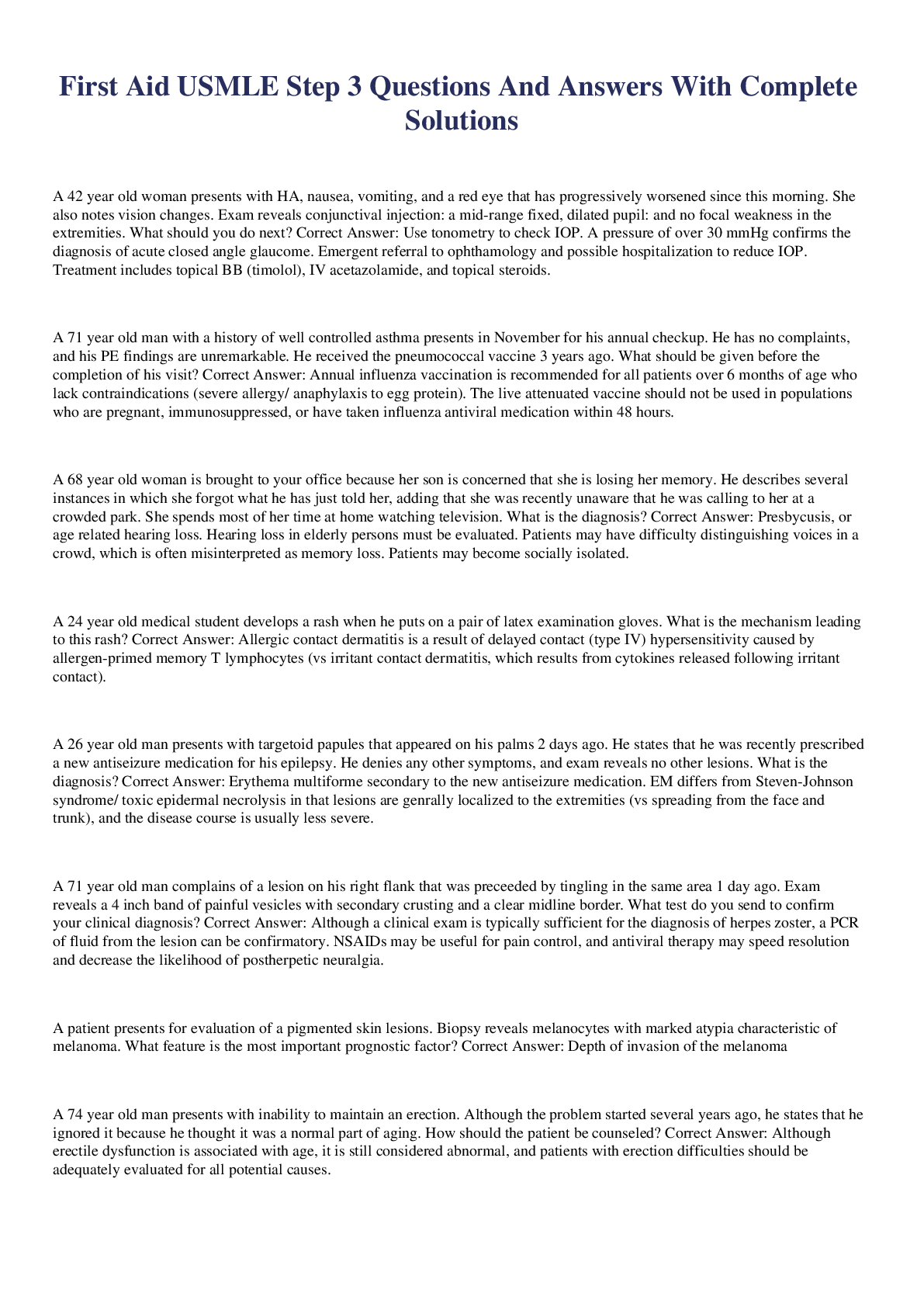
Reviews( 0 )
Document information
Connected school, study & course
About the document
Uploaded On
Aug 06, 2022
Number of pages
12
Written in
Additional information
This document has been written for:
Uploaded
Aug 06, 2022
Downloads
0
Views
84


.png)
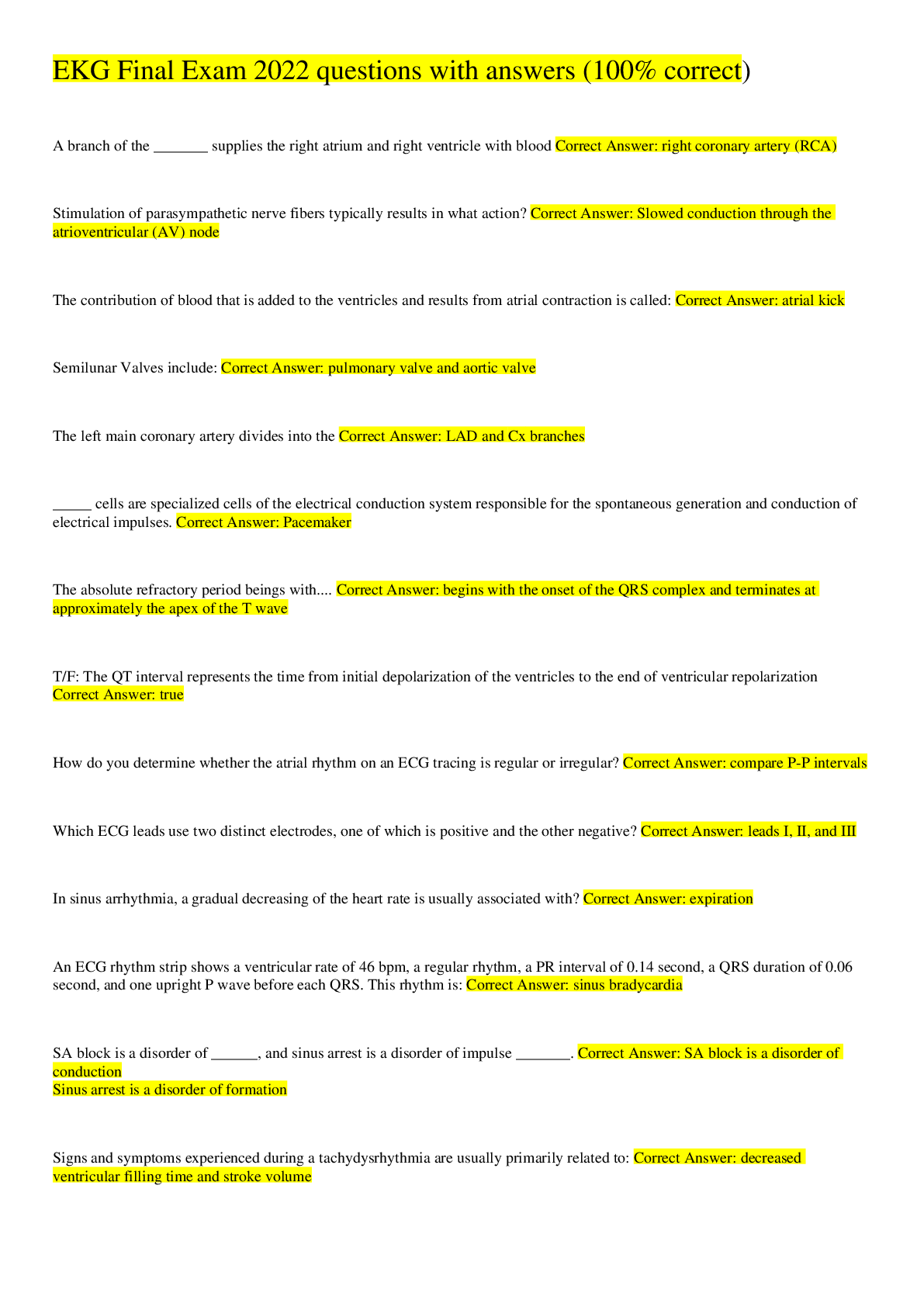
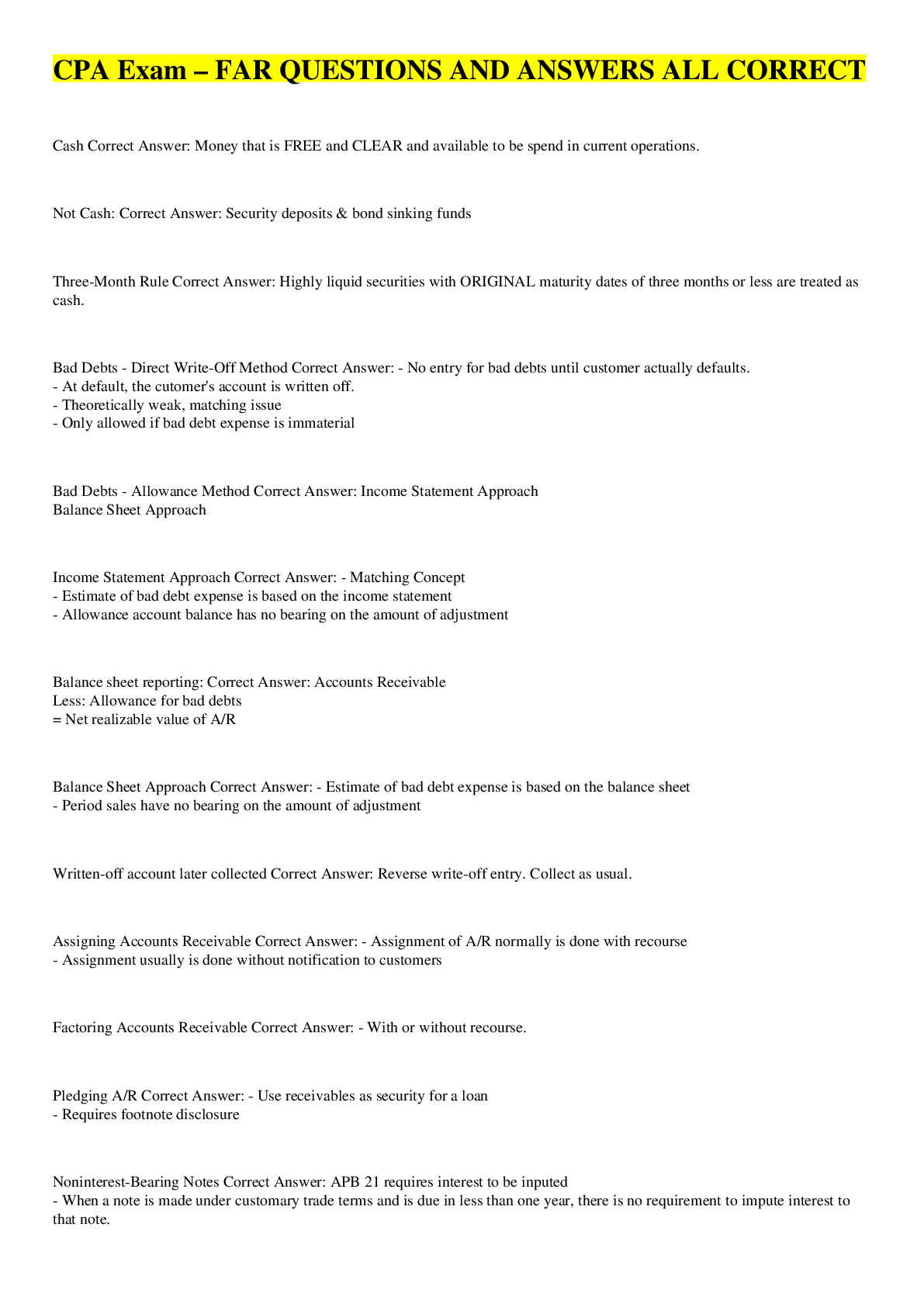

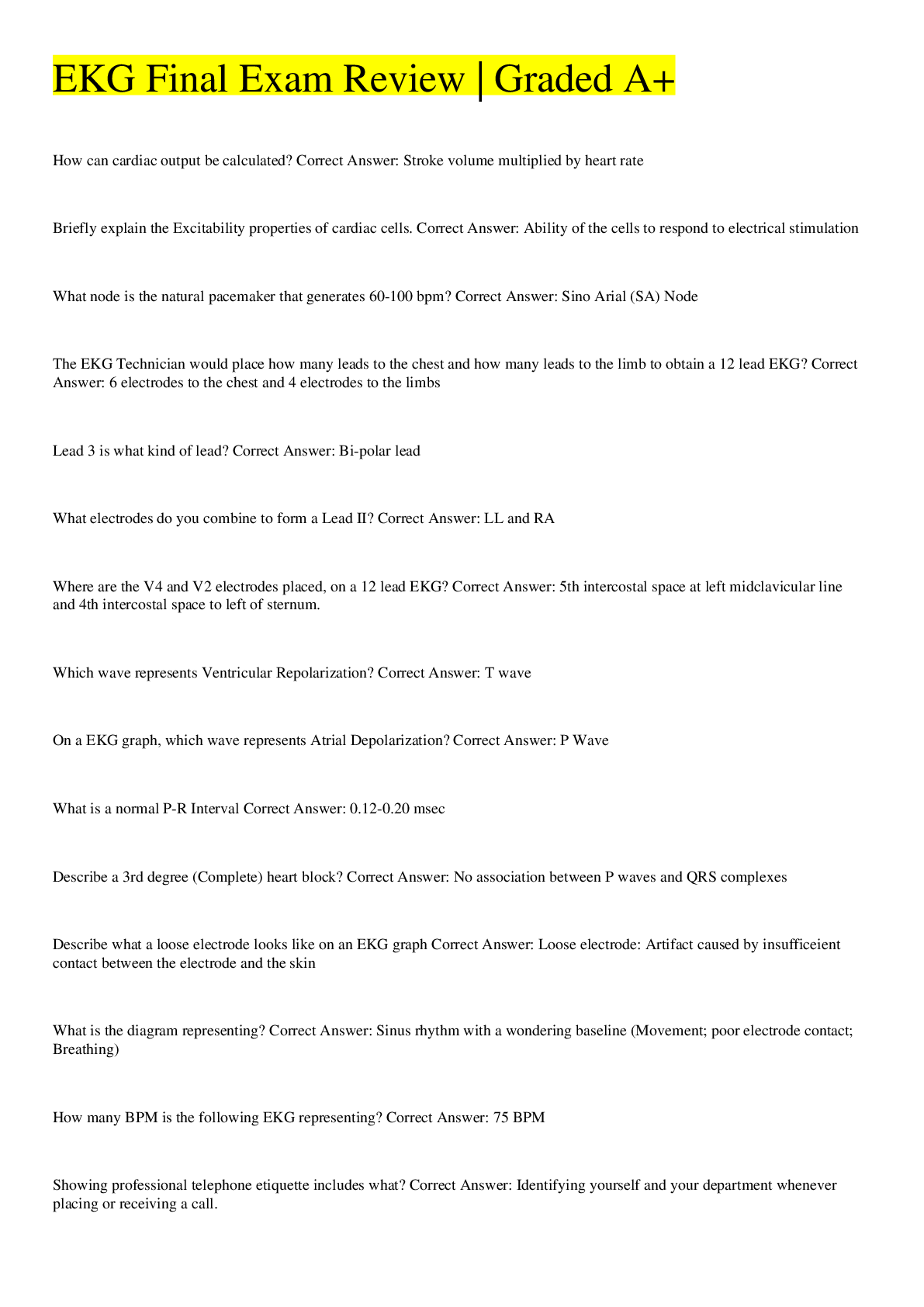
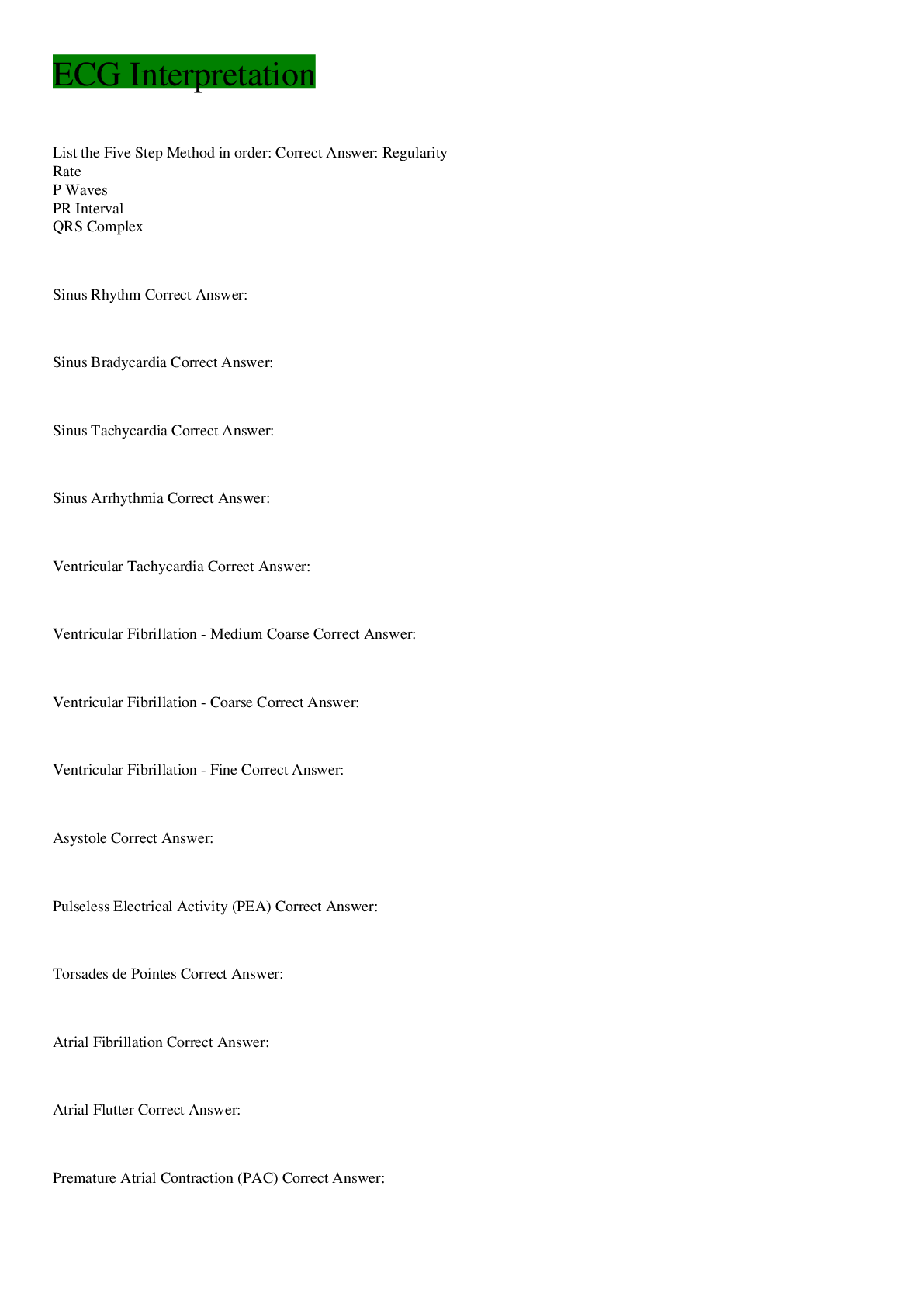


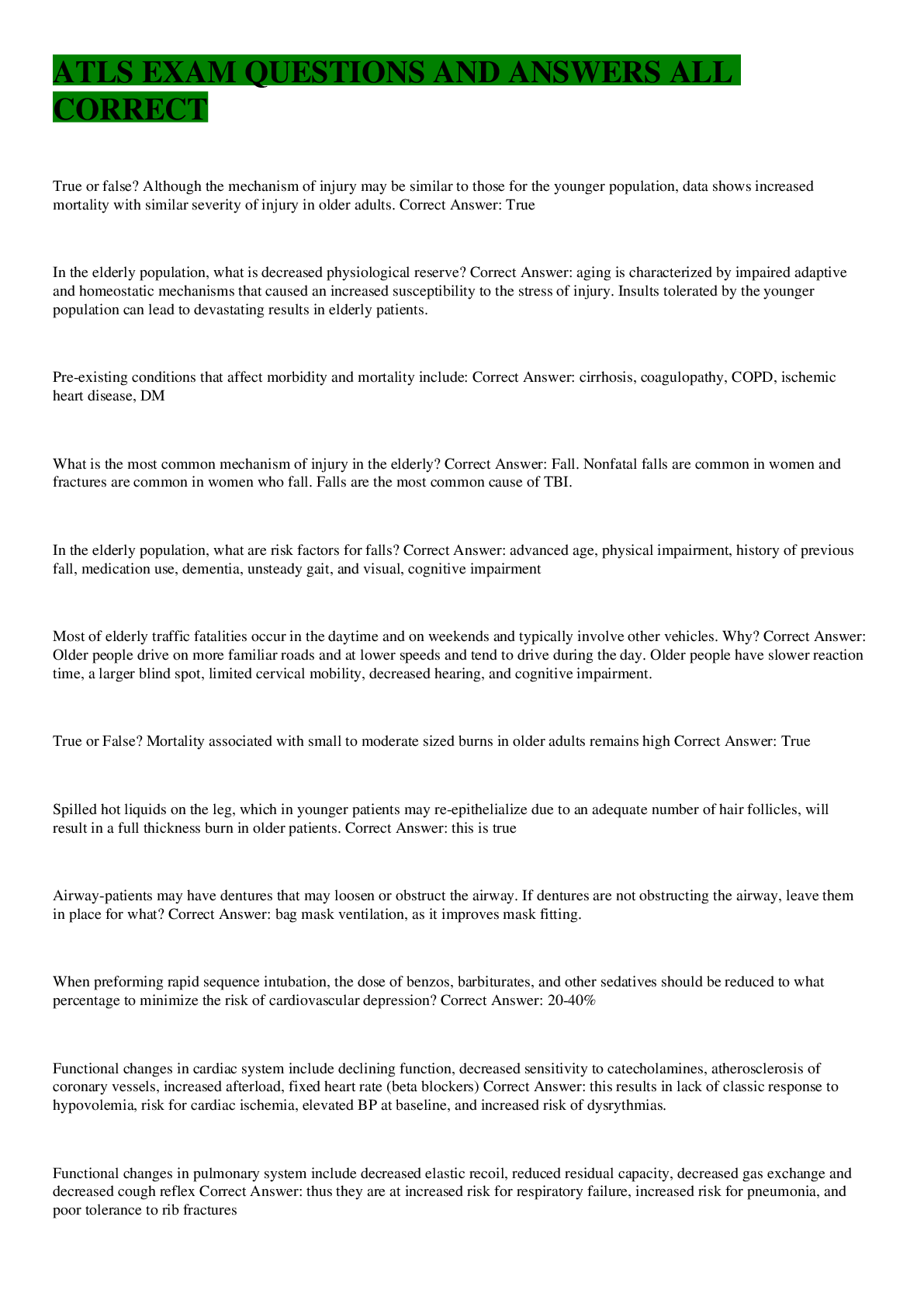

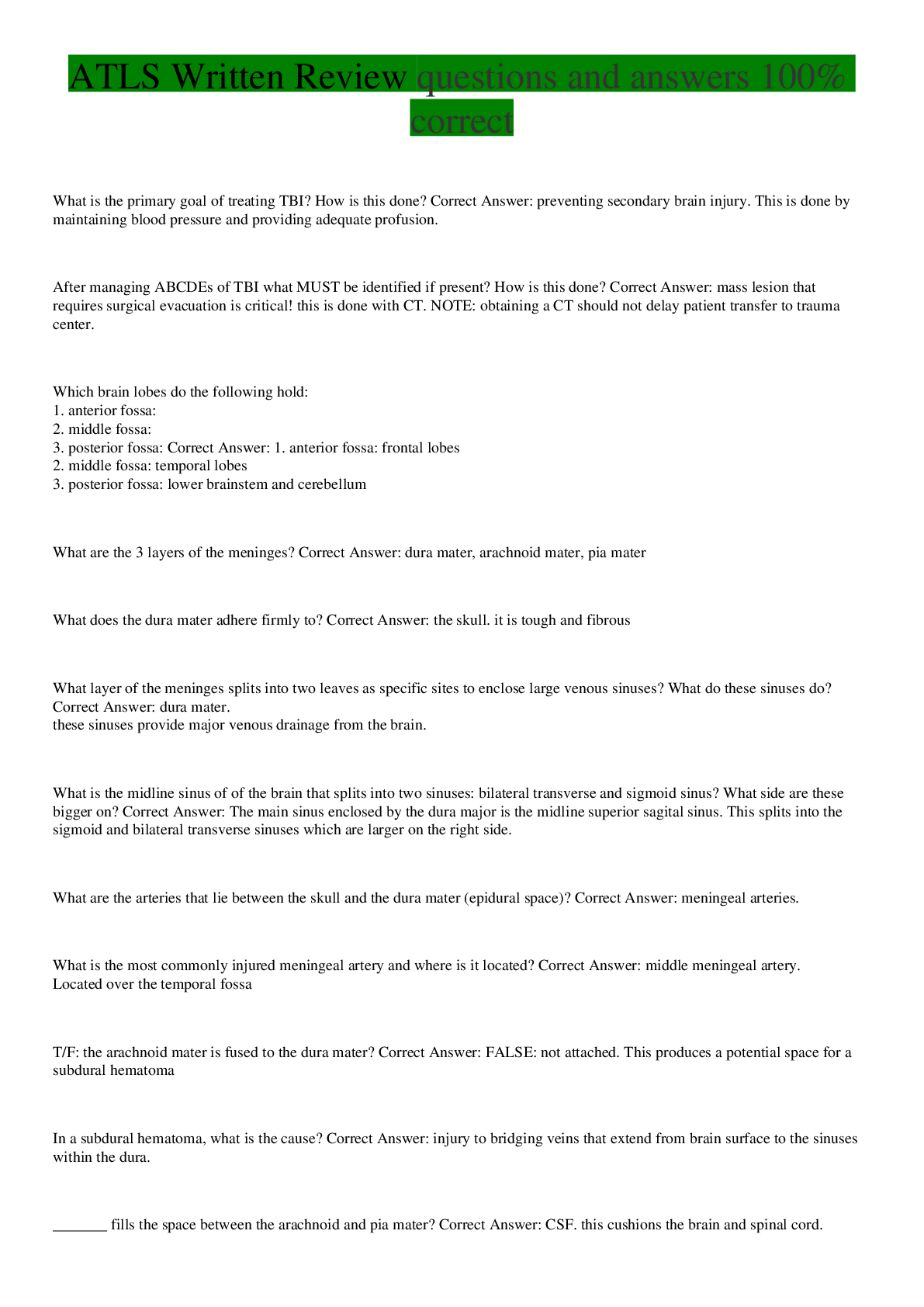

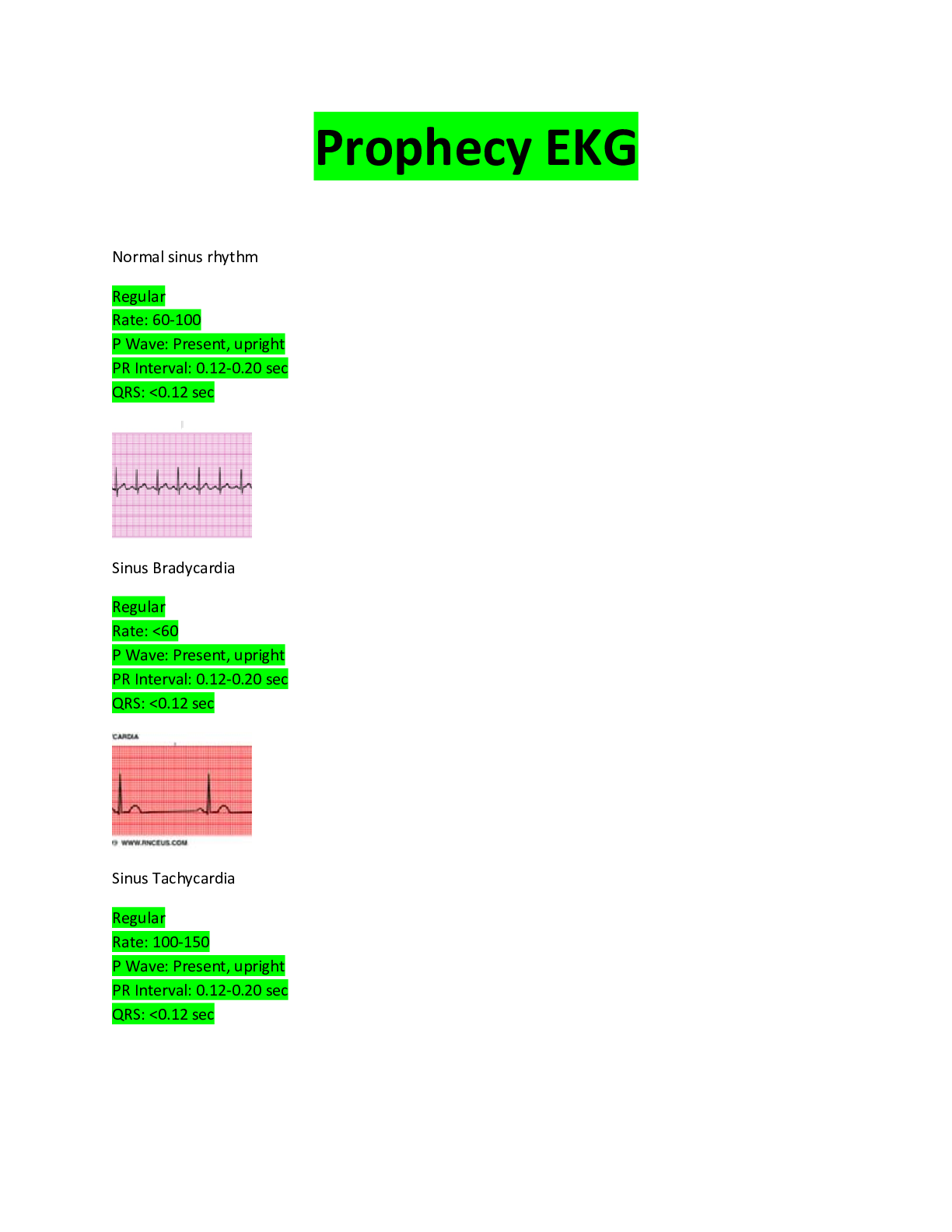
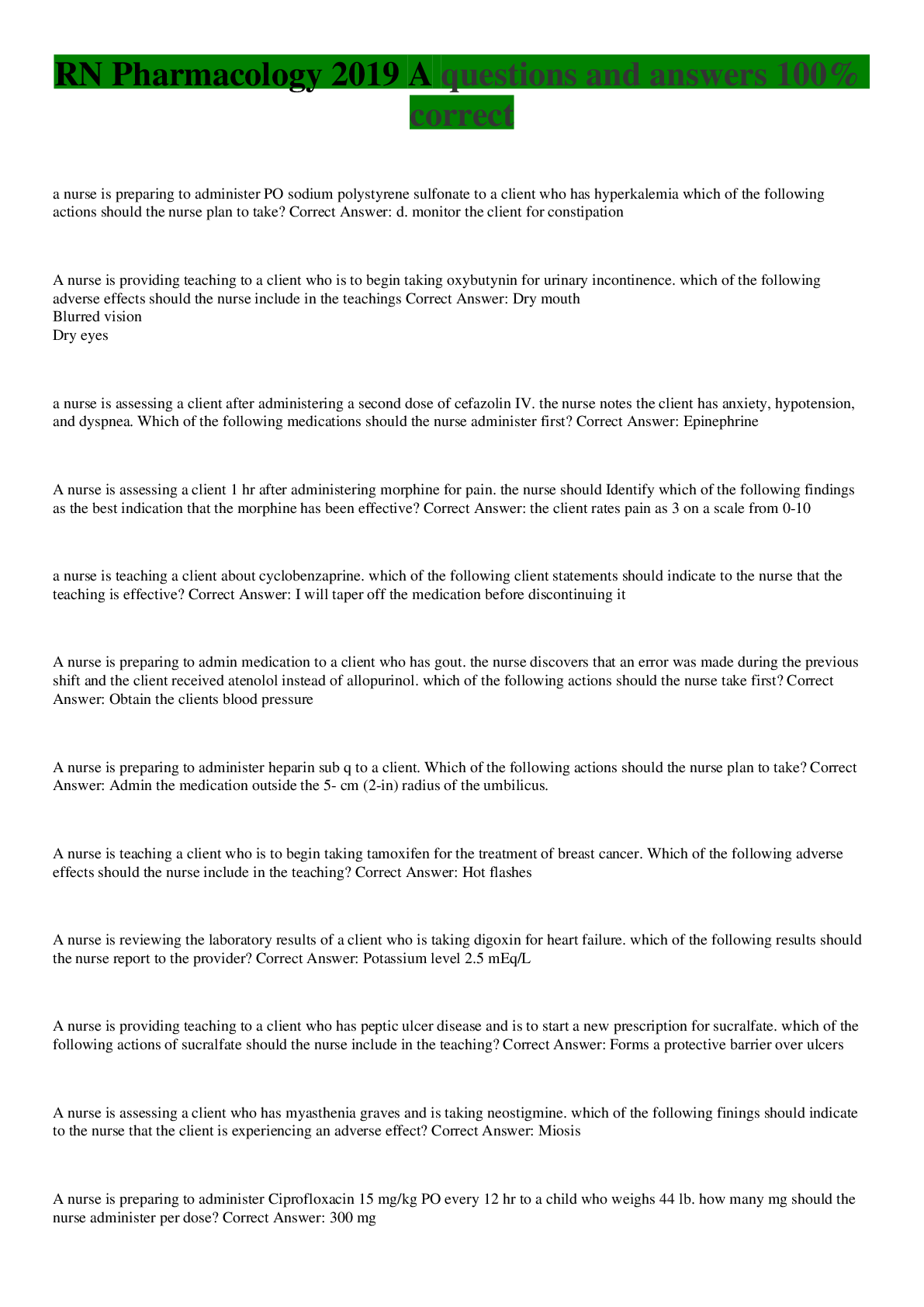






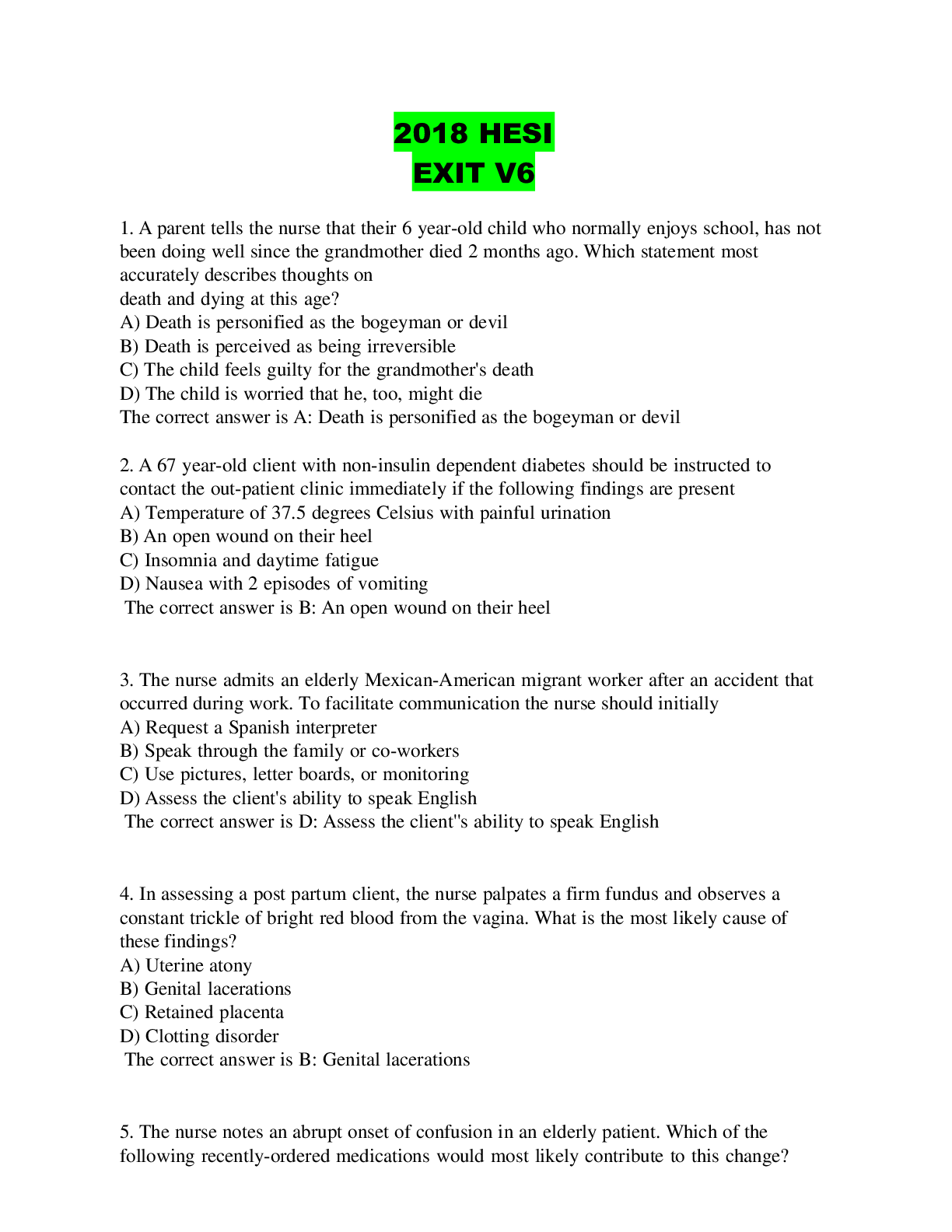


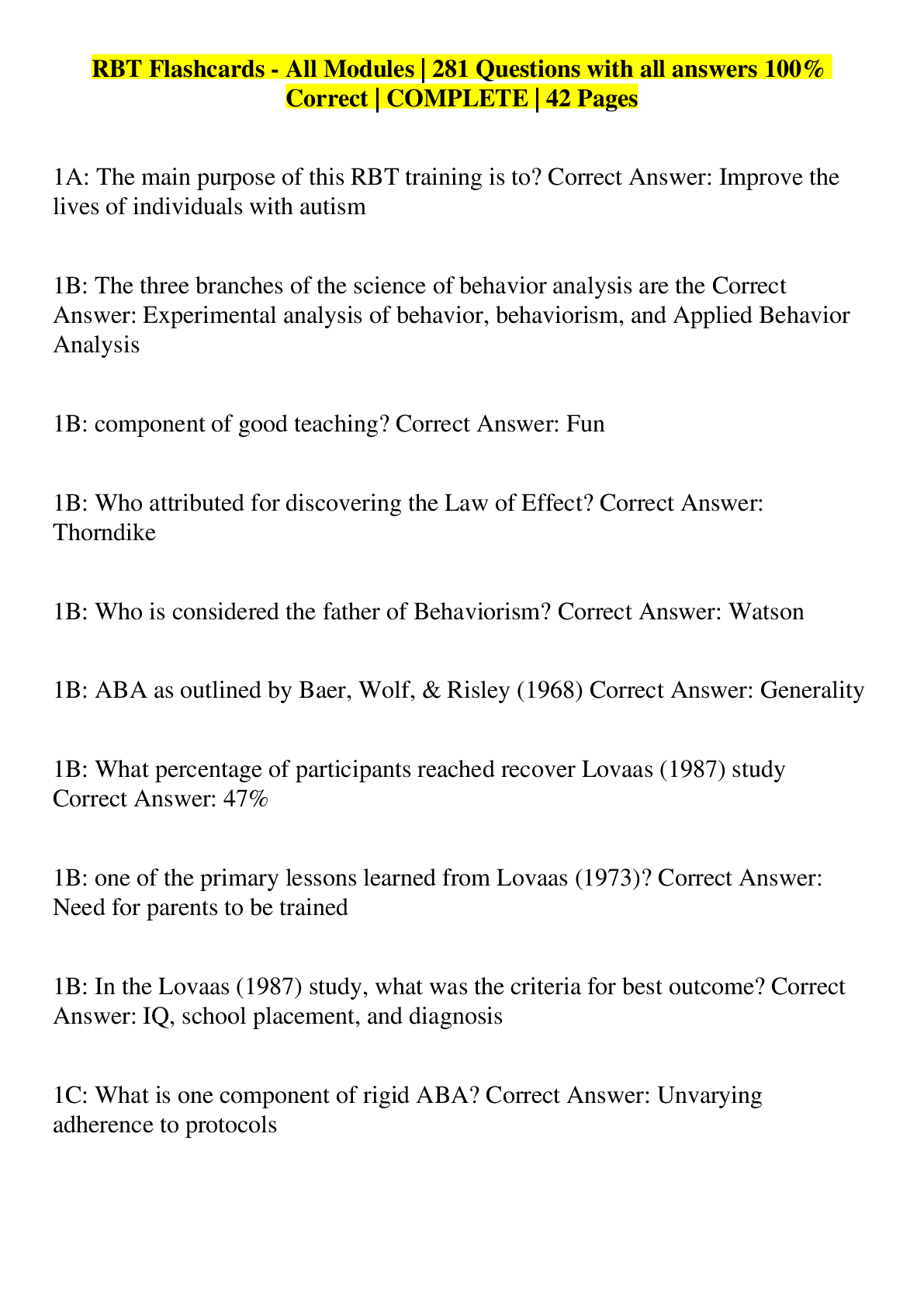





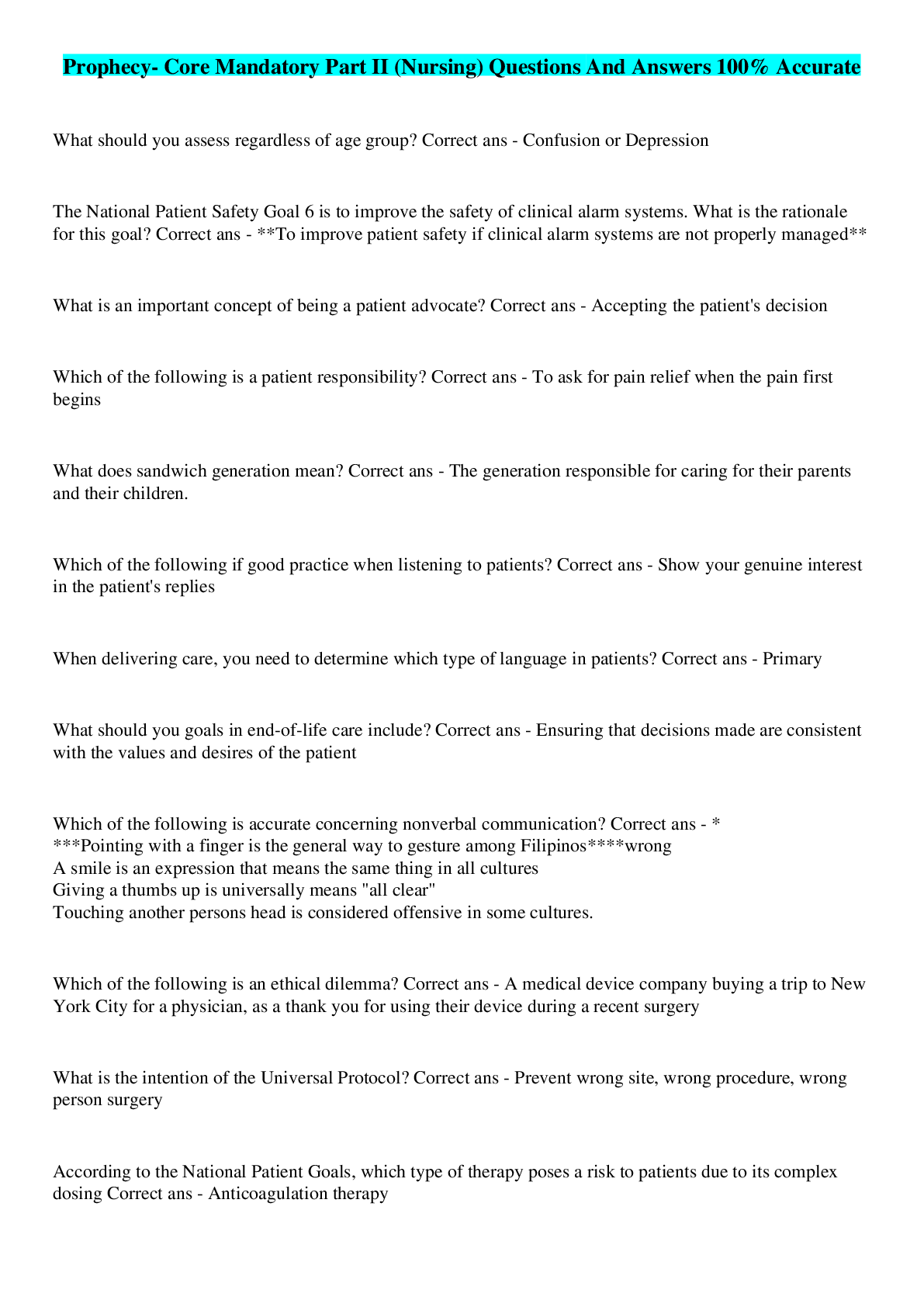
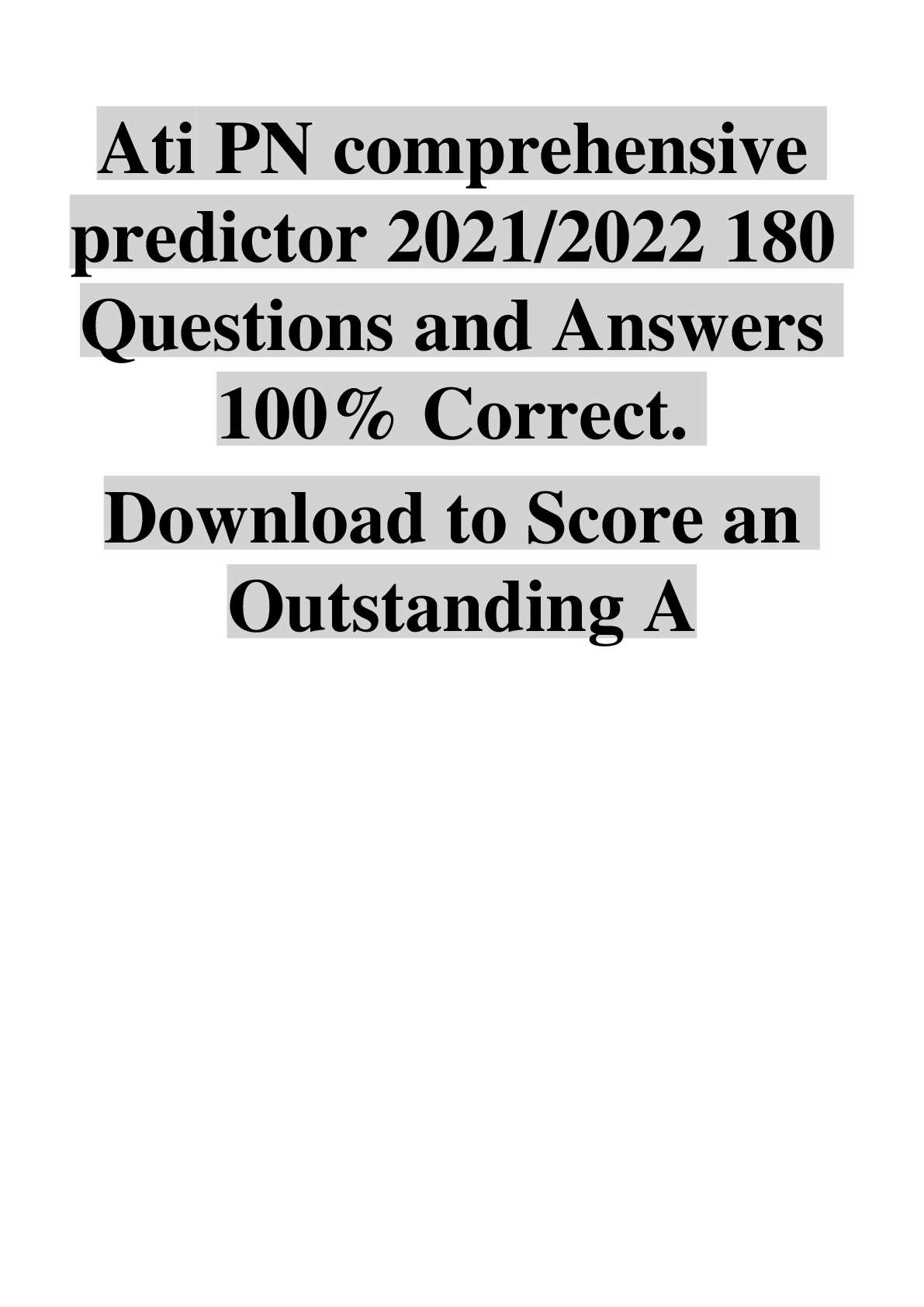
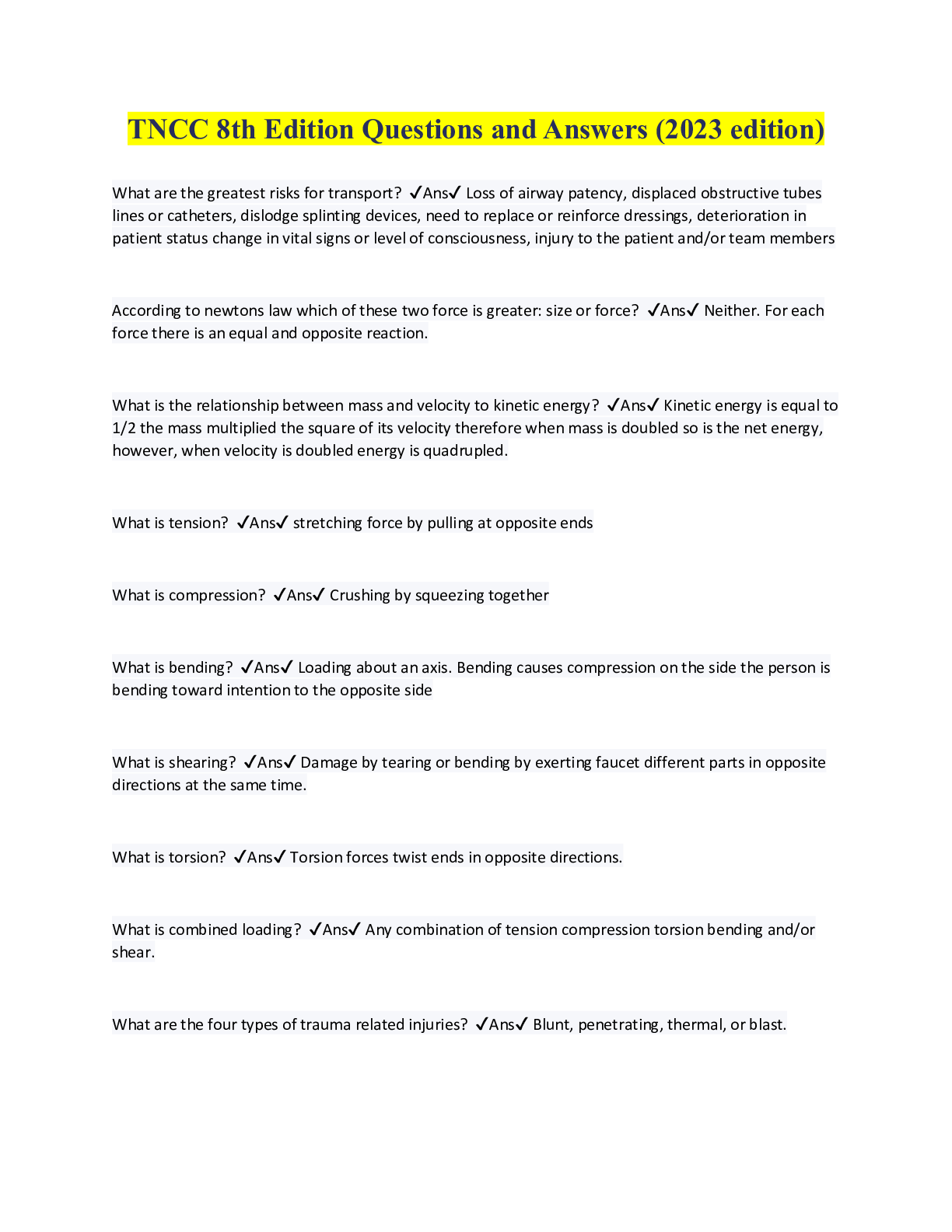
.png)
